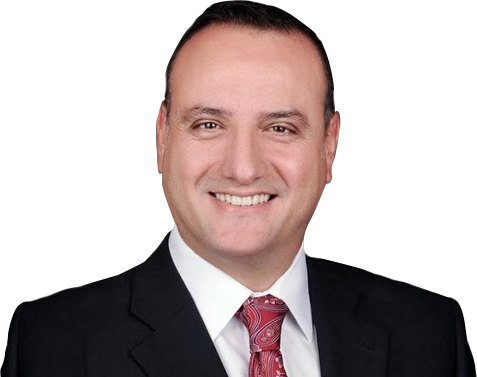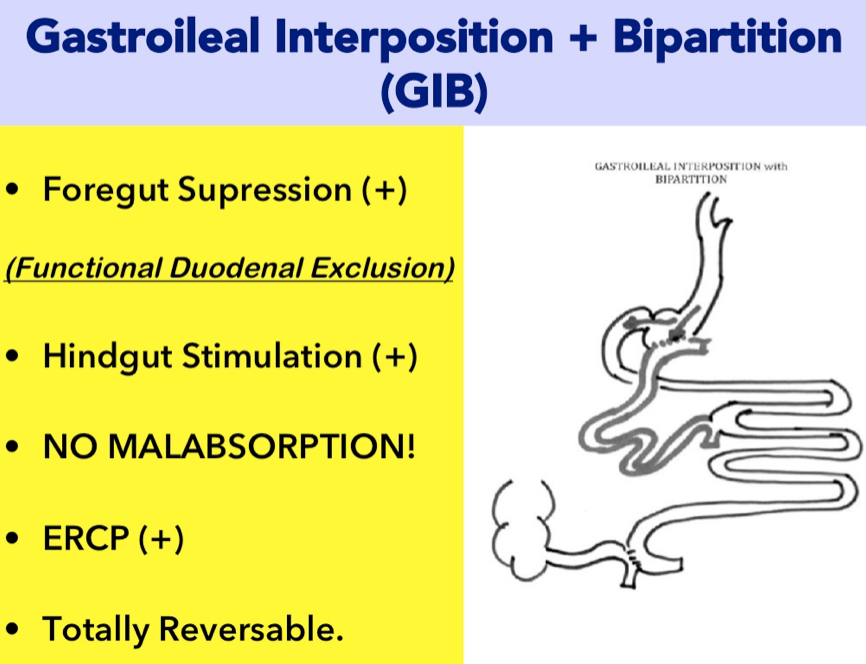
Gastroileal Interposition with Bipartition (GIB)
Gastroileal Interposition (GIB) is a new model of metabolic surgery that had been described by Tugrul Demirel M.D. as a salvage procedure for malnutrition after Transit Bipartition. Its based on mainly the hindgut stimulation and a functional duodenal exclusion which provokes the suppression of foregut derived negative anti-incretin secretion.
Gastroileal Interposition (GIB) :
-
- Ileal segment is connected directly to the stomach. Early and strong stimulation of distal ileum. (HINDGUT STIMULATION)
- Duodenal anatomy is preserved.
- ERCP is available after surgery.
- Large gastroileal anastomoses enhances food to be directed mainly to ileal segment. By this way duodenum is kept away from food. The negative incretin secretion is suppressed. (FOREGUT SUPRESSION!)
- All the bowels are in contact with food. Moreover the ileal segment which becomes the main route of stomach drainage, diverts all its material to the very beginning of jejunum. That’s why there is NO MALABSORPTION RISK.
Advantages of GastroIleal Interposition (GIB)
Gastroileal Interposition (GIB) operation is stronger than Jejunoileal Interposition (JII) in terms of foregut suppression and hindgut stimulation. Small intestine distance is not shortened as in all Interposition surgeries. In other words, no malabsorption occurs.
The advantages are: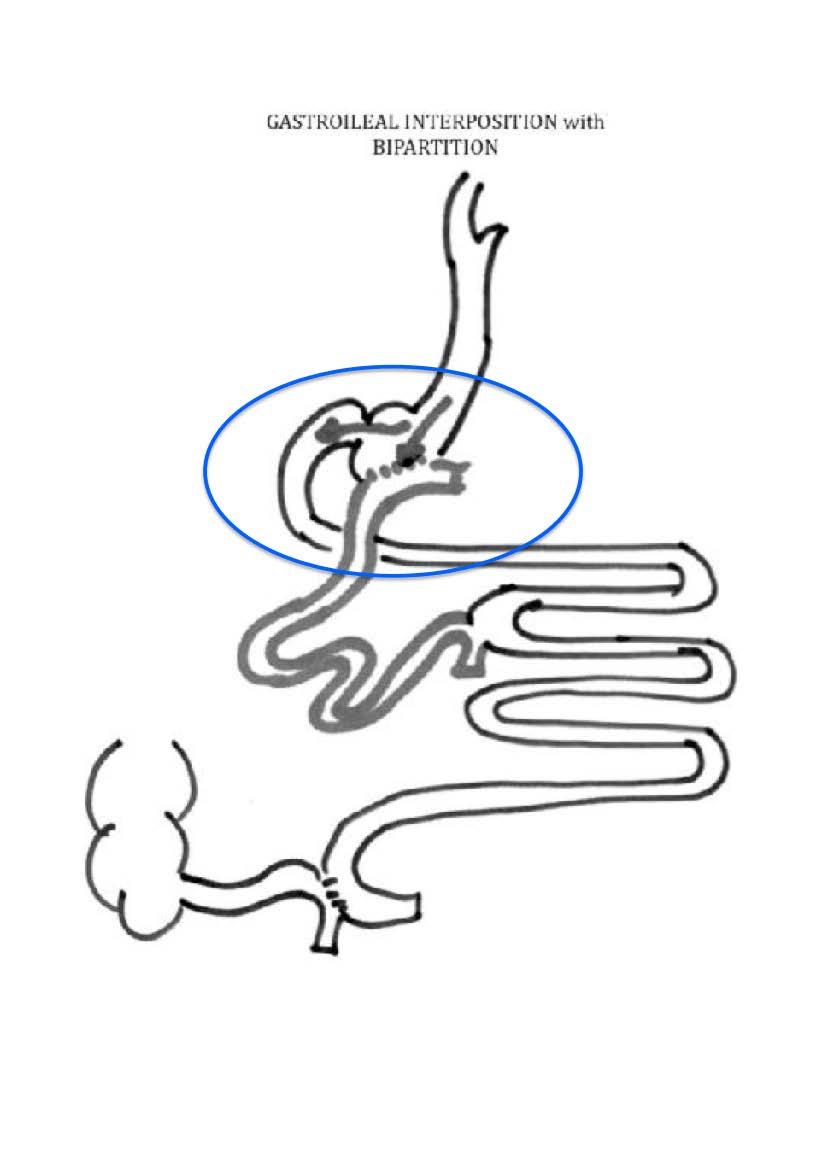
- To provide food transfer to ileum earlier than digestion. Early passage of foods to ileum, which are not mixed with bile, stimulates satiety hormones. The secretion of GLP-1 is stimulated strongly with early passage of foods to distal ileum segment. GLP-1 is rapidly released to the blood circulation. This fast GLP-1 production facilitates control of blood glucose.
GLP-1 has two important effects:
- Increases insulin production from pancreas.
- Reduces muscle and tissue resistance against insulin.
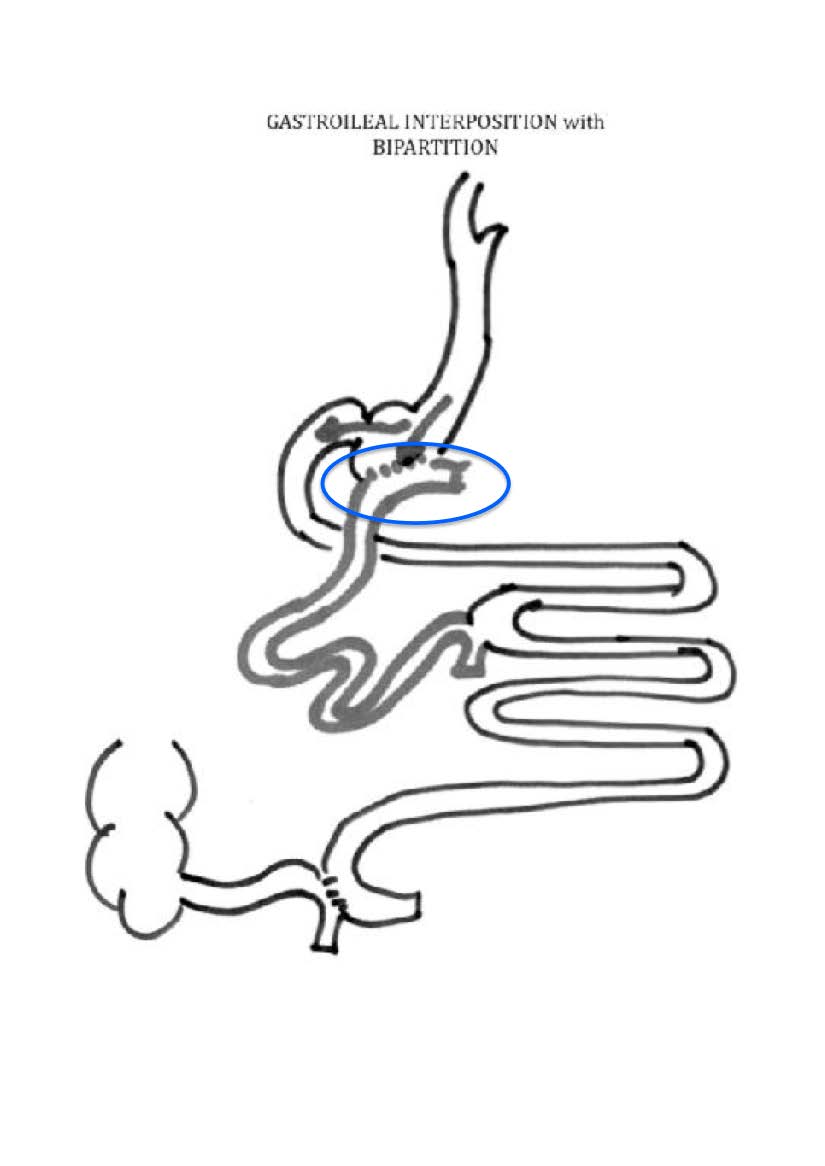 2) To provide hormonal balance. The effect provided by GastroIleal Interposition is actually regulation of hormonal signals between small intestines and brain. By this effect, hormones creating resistance against insulin are refrained. Obstacles before insulin are removed. Your blood glucose is reduced to normal levels easily with less insulin. This phenomenon is named as “hormonal breaking” or “neuroendocrine break”.
2) To provide hormonal balance. The effect provided by GastroIleal Interposition is actually regulation of hormonal signals between small intestines and brain. By this effect, hormones creating resistance against insulin are refrained. Obstacles before insulin are removed. Your blood glucose is reduced to normal levels easily with less insulin. This phenomenon is named as “hormonal breaking” or “neuroendocrine break”.
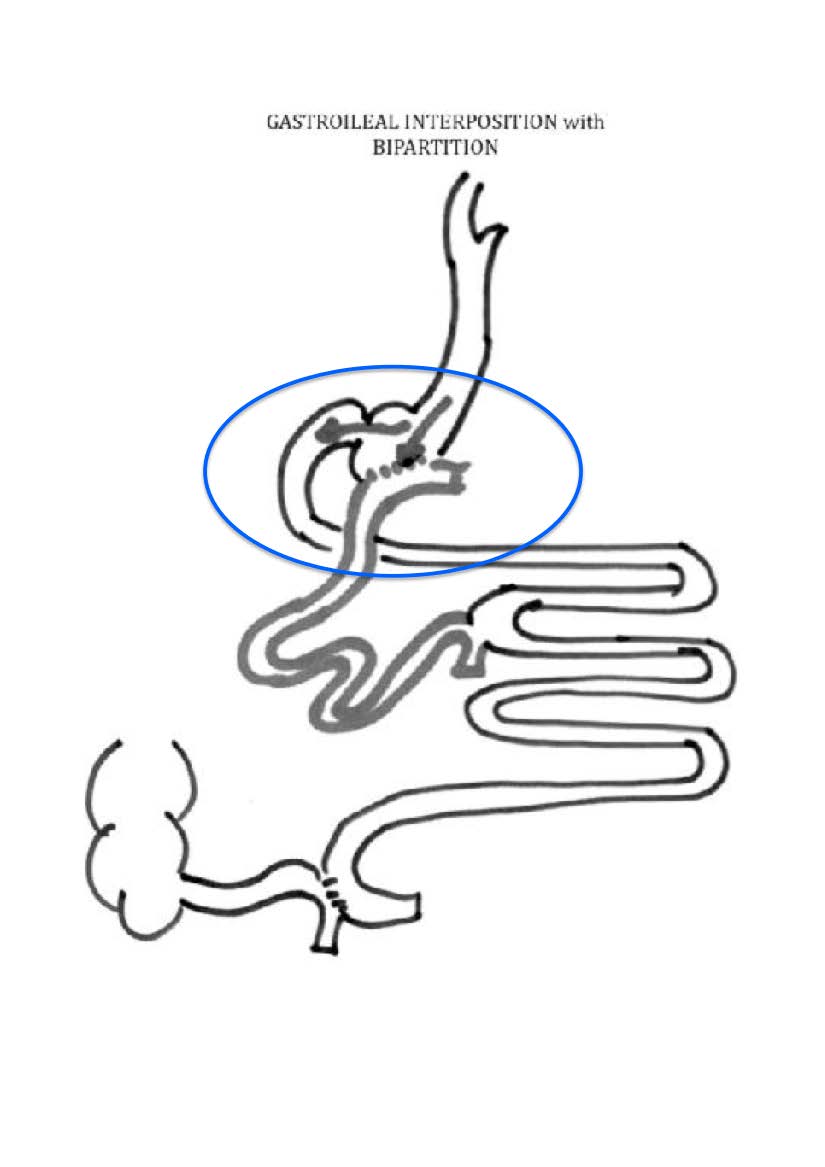 3. ERCP availability. The GIB Surgery, preserves the duodenogastric continuity while, functionally excluding duodenum from food transit. This anatomical difference from Duodenoileal Interposition, gives the patient the opportuinity to be able to preserve the availability of endoscopic evaluation for biliary problems with endoscopic retrograde colangio-pancreatography (ERCP). However, in Duodenal Switch and Duodenoileal Interposition, ERCP becomes impossible.
3. ERCP availability. The GIB Surgery, preserves the duodenogastric continuity while, functionally excluding duodenum from food transit. This anatomical difference from Duodenoileal Interposition, gives the patient the opportuinity to be able to preserve the availability of endoscopic evaluation for biliary problems with endoscopic retrograde colangio-pancreatography (ERCP). However, in Duodenal Switch and Duodenoileal Interposition, ERCP becomes impossible.
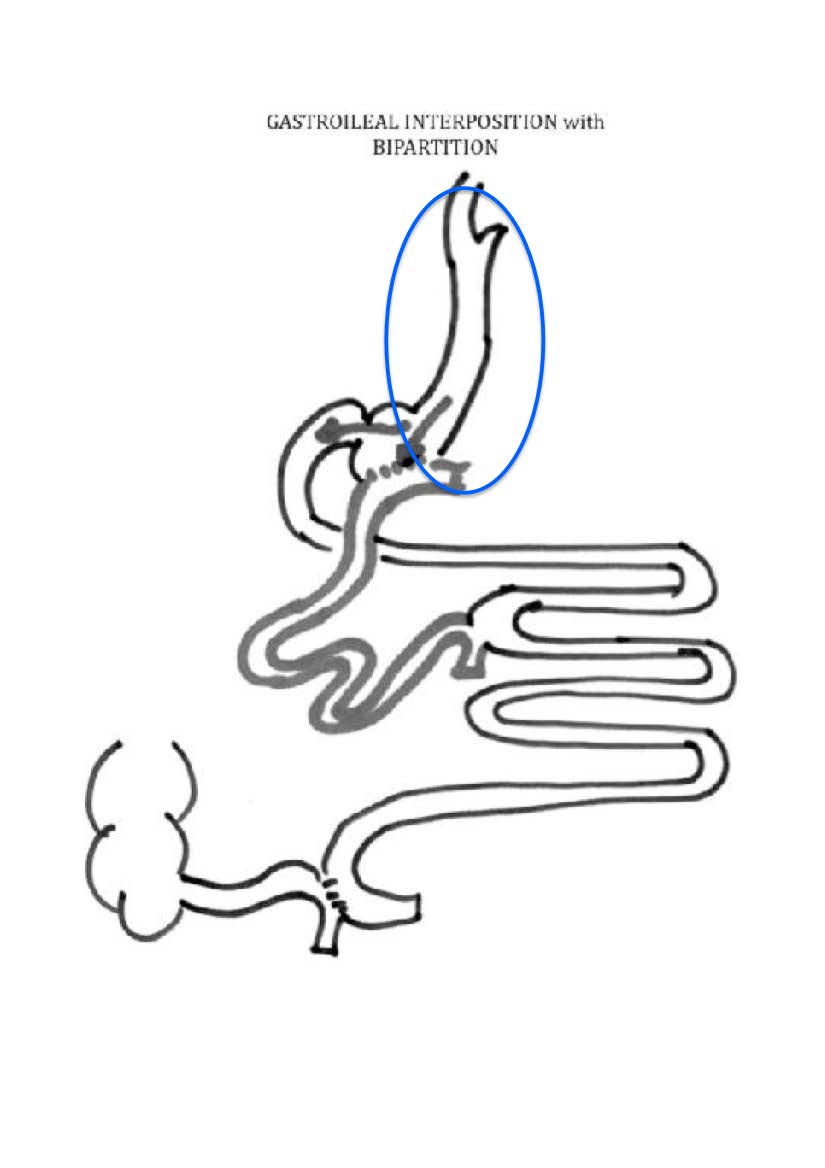 In first step of GastroIleal Interposition (GIB), half of the stomach is removed longitudinally. The stomach is formed in a tube shape just like a sleeve gastrectomy. Sleeve Gastrectomy is an efficient obesity operation even solely. The sleeve gastrectomy performed with GastroIleal Interposition (GIB) has a hormonal target to increase the metabolic response.
In first step of GastroIleal Interposition (GIB), half of the stomach is removed longitudinally. The stomach is formed in a tube shape just like a sleeve gastrectomy. Sleeve Gastrectomy is an efficient obesity operation even solely. The sleeve gastrectomy performed with GastroIleal Interposition (GIB) has a hormonal target to increase the metabolic response.
Ghrelin hormone secreted from the fundus part which is removed triggers sense of hunger. Therefore, Ghrelin hormone is also called as “hunger hormone”. When fundus part of the stomach is removed with sleeve gastrectomy, cells which produce hunger hormone are also removed. Hunger hormone levels reduces.
Ghrelin is also a part of anti-insuliner system (working against insulin). Ghrelin plays a role in insulin resistance. Sleeve gastrectomy applied with GastroIleal Interposition (GIB) contributes to a decrease on insulin resistance.
Finally, gastric volume is partially reduced. Fullness is obtained with small portions after the operation. So calorie restriction is performed.
- Ghrelin amount known as hunger hormone decreases. Sense of fullness lasts longer.
- Insulin resistance decreases by decrease of ghrelin.
- Stomach is reduced and calorie restriction is obtained.
- Earlier passage of foods from ileum increases GLP-1 secretion.
- GLP-1 stimulates pancreas and increases insulin production.
- GLP-1 also removed insulin resistance on the tissues.
- By elimination of insulin resistance, findings of diabetes regress.
Accompanying diseases due to diabetes also recover.
 English
English Turkish
Turkish
